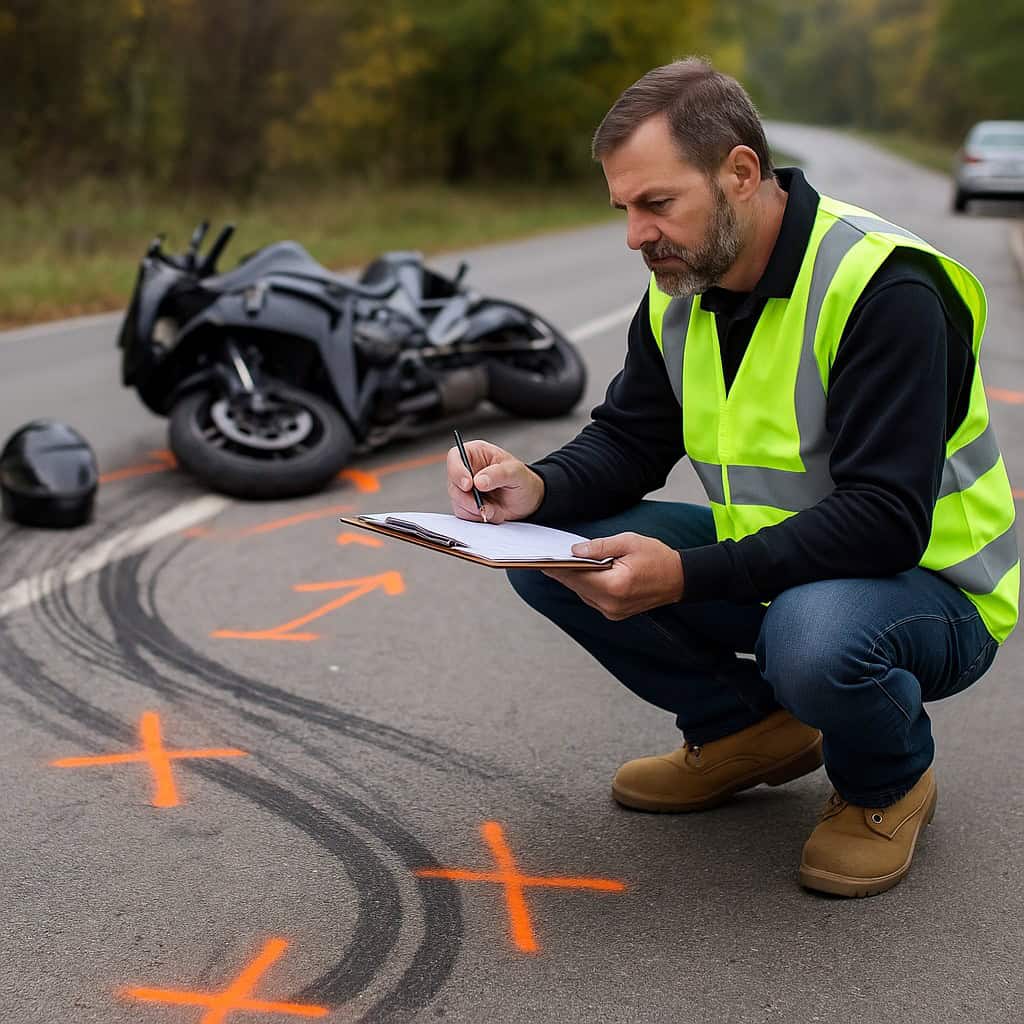In Connecticut, where winding backroads and city streets see a steady flow of motorcycle traffic, accidents can quickly turn life-altering, and unraveling what really happened is rarely straightforward. That’s why reconstruction experts are often called in to examine the crash from every possible angle. These specialists don’t just look at the aftermath—they recreate the moments leading up to impact using science, data, and eyewitness accounts.
Their work plays a crucial role in clarifying liability and strengthening injury claims. If you’re navigating the aftermath of a serious wreck, working with motorcycle accident lawyers in Connecticut ensures these expert insights are used effectively to support your case.
Understanding the Scene
The first stage in any reconstruction is an inspection of the accident site. Experts compile information from the scene, such as road conditions, weather, visibility, and location. They pay attention to any traffic signals or signs that could have played a part in the accident. This assists with creating an initial view of the crash environment.
Analyzing Physical Evidence
Physical evidence plays an important part in accident reconstruction. Investigators closely scrutinize the motorcycle and its components for signs of damage or failure. The inspector would assess the condition of the tires, brakes, and the state of other parts that could specifically cause the incident to take place. Investigators will analyze damage patterns of the motorcycle and the vehicles it may have come into contact with.
Gathering Witness Statements
Witness statements provide valuable insights into the moments leading up to the crash. Experts interview witnesses to gather different perspectives. These accounts can help establish the sequence of events and offer clues that might not be immediately evident from physical evidence alone. Consistent witness testimonies can significantly bolster the reconstruction process.
Assessing Rider Behavior
Learning the behavior of the motorcycle rider is essential. Experts examine the rider’s actions, like how fast they were going, what the lane position was, and if any evasive action was taken. They evaluate whether the rider was obeying traffic laws or behaving recklessly. The data gives an indication of whether human error was a large factor in the accident.
Technology and Data Analysis
Many new motorcycles aren’t limited to phone apps that record data; they have electronic systems on board that can also log data. Some of these systems quantify information like speed, throttle, and braking, and experts can pull this information out. Such data is unbiased because it documents the motorcycle’s performance and the rider’s activity just moments before the crash occurs.
Environmental Factors
Environmental factors largely affect the risk of an accident. They analyze the impact of lighting, weather, and the condition of the road. These factors are then evaluated to determine if they may have been a factor in the crash or if they may have impacted the rider’s response. Collectively, these factors help provide a bigger picture of the incident.
Consulting With Specialists
That mere site approach does not get far, and reconstruction experts usually team up with specialists to extract more insights. This might involve working with engineers, medical personnel, or human factors professionals. The contributions of the different specialists make for a fuller reconstruction.
Using Simulation Tools
Simulation Tools Are Used To Simulate The Accident. While those tools are not available to the public, they provide experts the ability to create models of different scenarios and analyze interactions of different factors. The crash can then be simulated to test out what may have happened—it creates a more complete picture of events.
Legal and Insurance Implications
The opinion of a reconstruction expert can carry a lot of weight in court and with insurance companies. Because their analysis could affect a court case or insurance claim, impact reconstruction must be accurate. Experts need to be careful to back up their discoveries and make the implications clear.
Continuous Learning and Adaptation
Accident reconstruction is constantly evolving. Hacker experts are aware of new tactics and technologies that can help them in their research. Their lifelong learning allows them to offer the most up-to-date and precise analysis possible.
Conclusion
A motorcycle accident reconstruction is both a specific and scientific process. Through analysis of physical evidence along with witness statements and factors in the environment, experts aim to ascertain the truth behind each incident. What they do is not only assist with how the event happened, but is also crucial for possible later legal and insurance purposes. By reconstruction, the expertise with analysis and cooperation offers vital inputs for justice and public safety.


